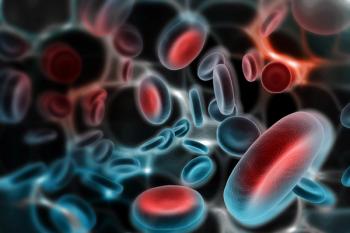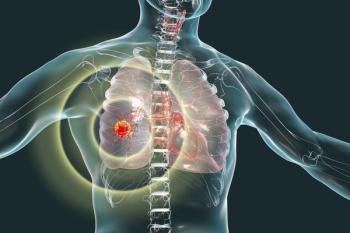
- ONCOLOGY Vol 13 No 3
- Volume 13
- Issue 3
Fludarabine Versus Conventional CVP Chemotherapy in Newly C Diagnosed Patients With Stages III and IV Low-Grade Malignant Non-Hodgkin’s Lymphoma: Preliminary Results From a Prospective, Randomized Phase III Clinical Trial in 381 Patients
To establish the role of fludarabine (Fludara) in previously untreated patients with low-grade malignant non-Hodgkin’s
To establish the role of fludarabine (Fludara) in previously untreated patients with low-grade malignant non-Hodgkins lymphoma (NHL), 381 patients were enrolled by 60 centers in nine countries between April 1993 and January 1997. Patients older than 18 years with NHL Working Formulation class A (chronic lymphocytic leukemia [CLL] excluded), B, and C were eligible. They were randomized, either immediately after diagnosis or after a wait-and-see period, to either eight courses of fludarabine (25 mg/m² intravenously [IV] daily for 5 days every 4 weeks) or eight courses of onventional CVP chemotherapy (cyclophosphamide, 750 mg/m² IV on day 1; vin-cristine, 1.4 mg/m² IV on day 1; and prednisone, 40 mg/m² PO on days 1-5 every 4 weeks). At entry and after the last course of treatment, complete (re)staging was performed, including computed tomographic (CT) scans and a bone marrow biopsy. From the 381 patients randomized, 72 (19%) were declared ineligible, mainly because of inadequate histology (CLL, mantle cell lymphoma) on central pathology review.
Response rates and survival times are presented according to intent-to-treat analysis. The overall response rate was 69% (39% complete response [CR], 30% partial response [PR]) in the fludarabine group and 53% (17% CR, 36% PR) in the CVP group (P = .001). In both treatment arms, these response rates were not significantly different between the subgroups of patients treated immediately after diagnosis or those treated after a wait-and-see period.
With a median follow-up of 570 days since randomization, the time to progression was 494 and 396 days for the fludarabine- and CVP-treated groups, respectively. With the limited number of deaths that have occurred so far, it is not possible to accurately assess any influence on overall survival at this time.
Toxicity > 2 (according to the World Health Organization [WHO] scale) was observed more frequently in the fludarabine arm for granulocytopenia and thrombocytopenia (P = .001). Significant hair loss occurred in the CVP group only. There were no significant differences in the frequency of severe infections between the two groups (2%). So far, 50 patients have died, 24 from NHL, 2 from a secondary malignancy, 3 from complications of treatment, 4 from intercurrent disease, and 17 from a variety of other causes (including missing data).
CONCLUSION: From the present study it can be concluded that fludarabine monotherapy is established as up-front treatment of patients with extensive low-grade malignant NHL, given the significant response rate (two times higher CR rate) and response duration without enhanced life-threatening toxicities. Apparently, it is too early to judge about possible differences in overall survival time. Fludarabine adds another important ingredient to the treatment strategy of patients with low-grade malignant NHL.
Articles in this issue
almost 27 years ago
WHO Declares Lymphatic Mapping to Be the Standard of Care for Melanomaalmost 27 years ago
Navelbine Increased Elderly Lung Cancer Patients’ Survivalalmost 27 years ago
Consensus Statement on Prevention and Early Diagnosis of Lung CancerNewsletter
Stay up to date on recent advances in the multidisciplinary approach to cancer.


















































































